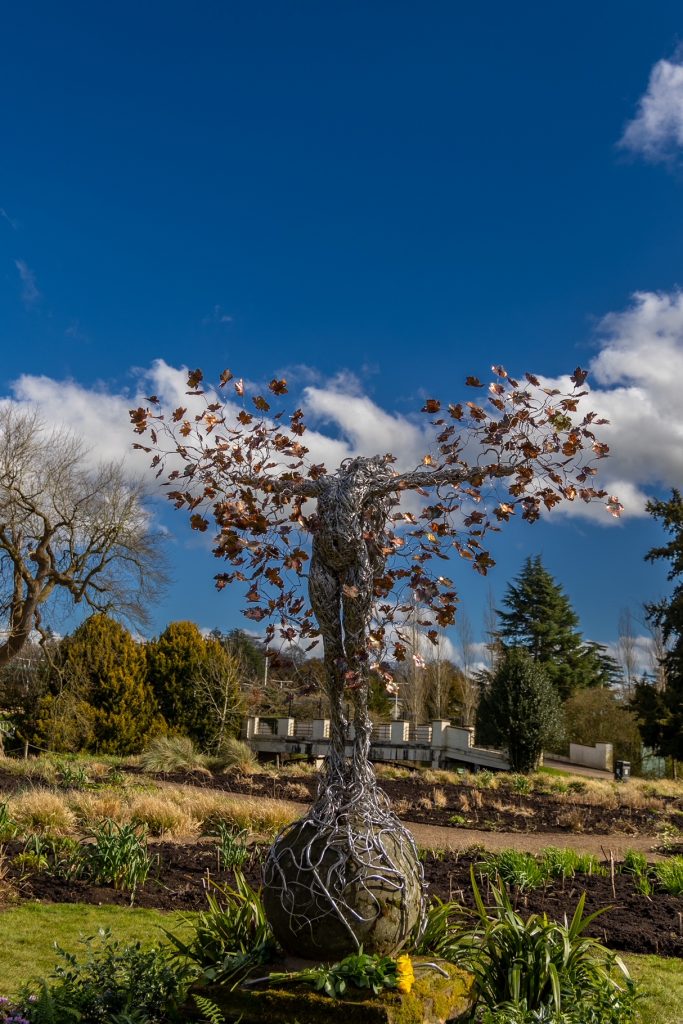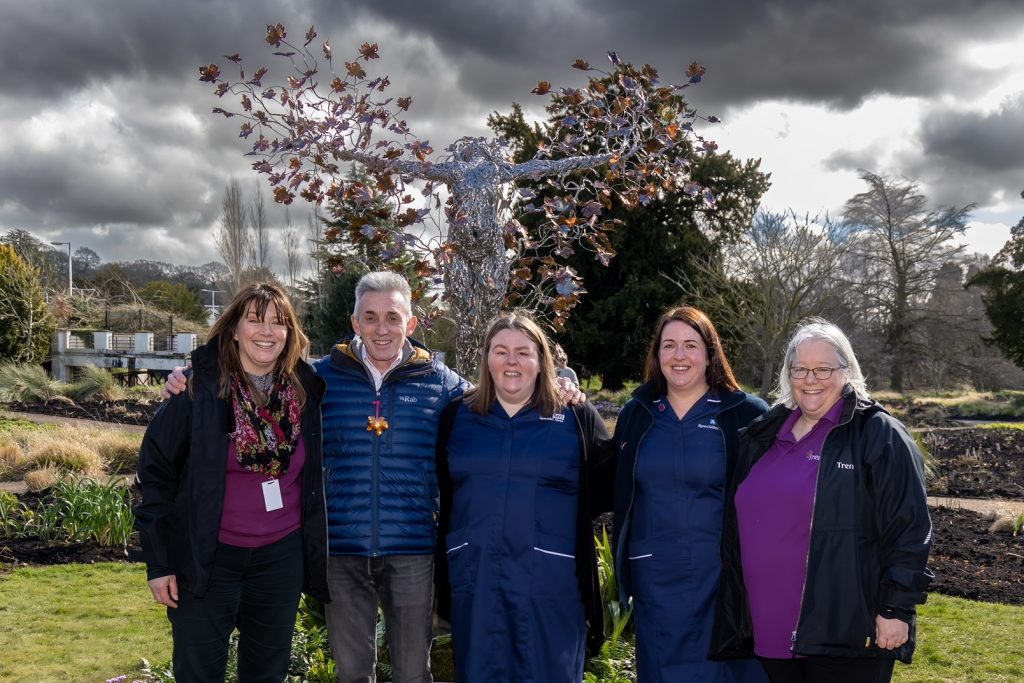Organ donation sculpture unveiled at Trentham
A sculpture commemorating organ donation has been revealed here at Trentham Gardens, in Staffordshire. The bespoke piece ‘Beyond Ithaka’ aims to raise awareness of organ donation and is providing a reflection point for families who have been involved in the process.
The unveiling of the sculpture was featured in BBC’s ‘The One Show’, with more than 170 donor family members travelling from as far as Cornwall to attend the special event.

There are around 7,000 people on the UK transplant waiting list. Last year more than 470 people died whilst waiting for a transplant. It is hoped the sculpture will draw attention to the importance of organ donation.
Specialist nurses from NHS Blood and Transplant (NHSBT) – based at University Hospitals of North Midlands NHS Trust (UHNM) – helped to organise the event and were on hand throughout the day to support families.
Kirsty Lazenby, Specialist Nurse Organ Donation & Transplantation for NHS Blood and Transplant, said:
“Because of Covid a lot of families have not had the opportunity to be together when loved ones died, so this has really given them their first chance to grieve properly together.
“Every person who became a donor died in sudden and or traumatic events, so it was very difficult for people, but every single one of our donor families is amazing.
“The event was extremely emotional for family members and for us. We think this sculpture will provide a beautiful and dignified place for people to remember loved ones who have donated or received an organ. We also want to raise awareness of the importance of organ donation and we think this will be a great way of getting the conversation started.
“Since April 2021 3,121 people have received a transplant. This really highlights the need for people to sign up.
“There’s also a stark and worrying contrast between different ethnicities. For example, only 11.5% of eligible donors are from BAME communities and the consent rate for BAME donors is 36% compared with a consent rate of 75% for white eligible donors.”
In May 2020 the law in England was changed to an ‘opt-out’ system, where a person is required to specifically state if they do not wish to donate their organs.
Kirsty continued: “It’s our job to facilitate organ donation and in order to do that we educate and encourage people to make their wishes known. Before the law changed, lots of families were struggling to make the decision because they didn’t know what their loved ones wanted, but thanks to the ‘opt out’ change, we can now confidently assume that people who have passed away supported the process, unless they informed us otherwise. This has made things much easier and more straightforward for families and for clinicians.”
“A hospital isn’t always the most appropriate place to have something like this as being there can bring back very painful memories for people, so we were absolutely thrilled when the team at Trentham agreed to work with us.”
The sculpture will be a permanent fixture at Trentham.
Robin Wright, who is also known for creating the ‘fairy sculptures’ at Trentham, is the artist and designer behind the project.
Robin said: “When I was asked if I would consider a sculpture commission for the NHS, I was doubly honoured and delighted. Being asked in the first place is a great compliment, plus we all owe the NHS a debt of gratitude and our full support. I was slightly nervous about the project, but only because I want it to have the desired impact to raise awareness of such a worthy cause.”

Alastair Budd, Senior Director of Trentham, comments: “Trentham holds special memories for many and its beautiful and peaceful grounds make it an ideal place for reflection and to remember loved ones. Robin’s work is truly spectacular and we are so proud to have come together with NHS Royal Stoke Hospital to create a meaningful memorial for the loved ones of organ donors, as well as creating an important talking point for all our visitors.”
All photographs by Steve Ryles